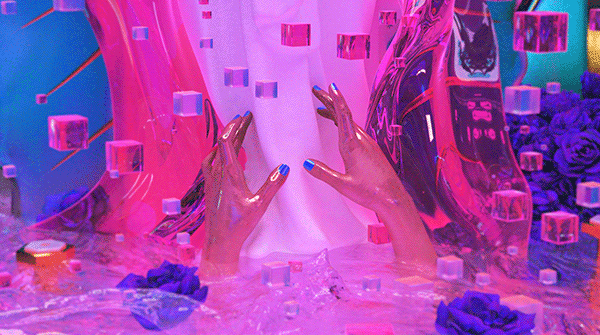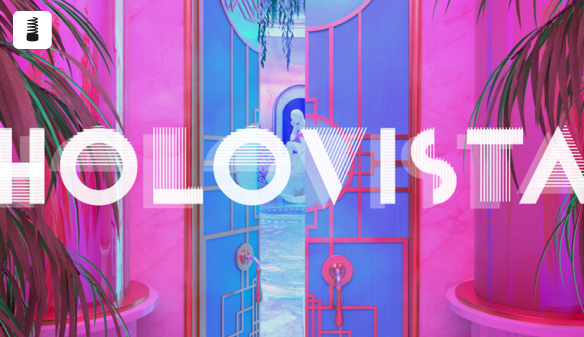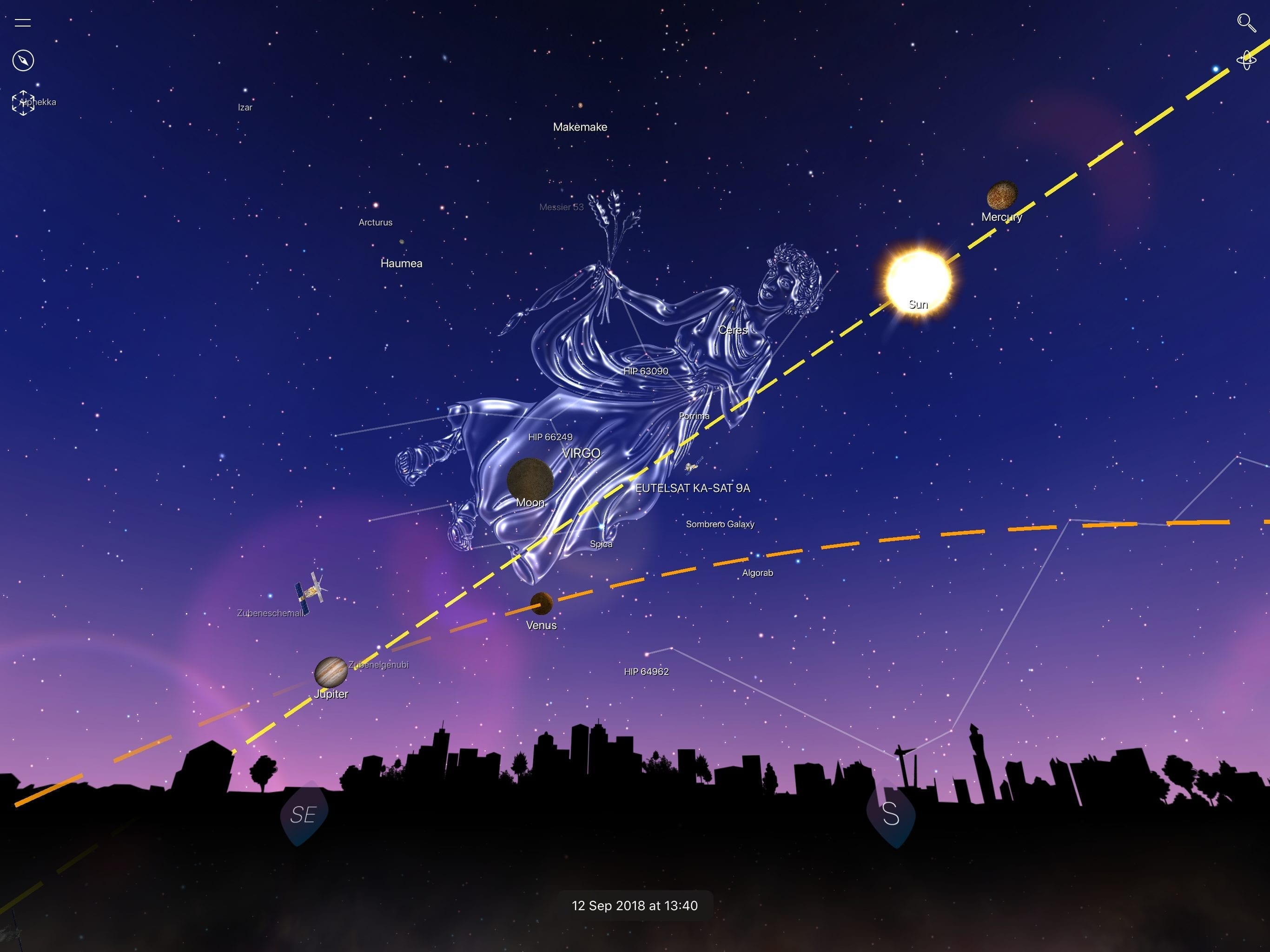Created by San Francisco-based platform Aconite Co., mixed reality game HoloVista can best be described as creating one of the most lush and opulment gaming environments in the world of gaming. As an immersive commentary on social media, HoloVista players find themselves surrounded by jewel-toned hues while navigating a dreamlike mansion. Having been recruited to take photographs for a mysterious firm, players are tasked with discovering the space’s secrets, as the mansion learns more about the players themselves.
While there is no shortage of video games that utilize grittier art direction to visually represent danger, HoloVista has been lauded for leaning into a luxurious aesthetic that feels all at once sublime and ominous. The game won the 2021 People’s Voice Award for Independent Creator.
We spoke with the Aconite Co. team about creating this unique gaming experience.
HoloVista has been lauded for having “one of the most opulent settings in videogame history.” Why was such a lush environment important for the game, and how does this kind of surreal elegance accomplish what you wanted to do?
Nadya Lev, Co-Director: HoloVista deals with themes of layered realities and of “keeping up appearances.” Our protagonist, Carmen, struggles with issues of class and status. When her new employer – the mysterious architecture firm Mesmer & Braid – orders her to spend a few days in a new mansion they’ve constructed, at first she’s awed by its opulence, and then she’s overwhelmed by its surrealism. But there’s another quality we aimed for in designing the environments – not just surrealism, but hyperrealism. In the context of philosophy, hyperrealism is defined as “an inability of consciousness to distinguish reality from a simulation of reality.” This theme is central to our game’s story.
But hyperrealism isn’t just a semiotics term – it’s also an art style. Hyperrealistic art aims to mimic and amplify the level of realism you’d see in a high-resolution photograph, reproducing it in a more artificial medium such as painting, sculpture, or – in HoloVista’s case – both the 3D art of the game itself and Mesmer & Braid’s chosen aesthetic within the game world. HoloVista’s environment design pushed textures, surfaces, and lighting to extremes designed to feel concurrently synthetic and more real than reality itself. This choice served to give the player a sense of Carmen’s disorientation in the story.

Credit: Aconite Co.
What are the challenging and enjoyable aspects of creating an environment like this (versus something grimier)?
Cory O’Brien, Writer/Narrative Designer: The nice thing about creating these surreal, synth-wavey, retrofuturistic environments is that it gave us a lot of room to violate player expectations. In a grimier or more familiar environment, players are expecting things to be askew, damaged, etc. But when you set the expectation that things are dreamy and perfect, even the slightest deviation from that standard can have a powerful effect on players. It was a lot of fun coming up with ways to show the subtle disintegration of the game environment as the story advanced.
Probably the most difficult part of creating these environments was finding ways to densely pack the scenes with information, without violating the clean aesthetic we were going for, especially in early parts of the game. Few peoples’ image of their ideal dream house includes stuff scattered all over the floor, but since we were making a hidden object game, we needed to use every surface and nook as a potential hiding place for gameplay objects. Accomplishing that without making things cluttered was a definite tightrope to walk, and it wouldn’t have been possible without such a talented group of 3D artists and game designers on our team.
At the center of the game is a mysterious mansion whose secrets players have to figure out. How do you go about creating this kind of puzzle so that it keeps players engaged?
Scott Jon Siegel, Lead Game Designer: Part of the magic of HoloVista is that despite the game’s immersive and mysterious atmosphere, it’s actually designed to be very casual and approachable. We wanted to make sure as many players as possible could experience the story and world of HoloVista, without them needing to be well-versed in particular kinds of puzzles or games.
The result is gameplay that’s fun and rewarding to play, but never overly punishing in its level of difficulty, or unnecessarily obtuse in its puzzle solutions. That said, there are actually harder puzzles in the form of optional locked posts throughout Carmen’s feed. If players can discover Carmen’s secret passwords, they’ll unlock private journal entries. And while these entries provide greater context for Carmen’s emotional state and personal history, they aren’t required for completing the game, allowing us to make them more challenging without impeding progress through our narrative.

Watch
Inside HoloVista
Did working on this game and platform give you any new insight into what is possible with videogames and where you might focus your efforts in the future?
Star St.Germain, Co-Director: HoloVista increased immersion by emulating familiar social media conventions, taking a form that players use in their real world interactions. In addition to this, our virtual camera behaved the same way that most phone cameras do. Nearly all players, regardless of games literacy, knew how to play. We discovered we delight in dressing our fictions in the costume of reality. In future projects, we’ll be considering new ways to play with users’ expectations by using and subverting patterns they are familiar with, as we did on HoloVista.
HoloVista won the People’s Voice Award for Independent Creator in Games. What do you think it is about this game that resonates with people?
Meredith Hall, Lead Producer: I think everyone can identify with a sense of feeling left behind by the world around them – social media has amplified our sense of ‘other’ against our friends, family, rivals – and we watch other people’s highlight reels grow with less context than ever before. Carmen’s story is ultimately a journey of understanding, self-love, and learning to live with insecurity rather than fighting it all the time. For a lot of millennials, the promise of our lives versus the reality, and the speed at which we’ve watched technology advance have shaped a combination of active reflection and digital memory that other generations haven’t had to grapple with before. Then, the health and wellness craze ensued and self-care became a responsibility of the individual.
Both ends of the coin feel exhausting, and push an onus on the individual to survive in an environment they have no ability to truly impact. It’s a story of forgiveness – releasing expectations, forgiving yourself for things both within and outside of your control, and embracing true human connection over a digital faux utopia where you can’t be yourself. Everyone can see themselves within Carmen’s story – regardless of where they are on their personal journey.







